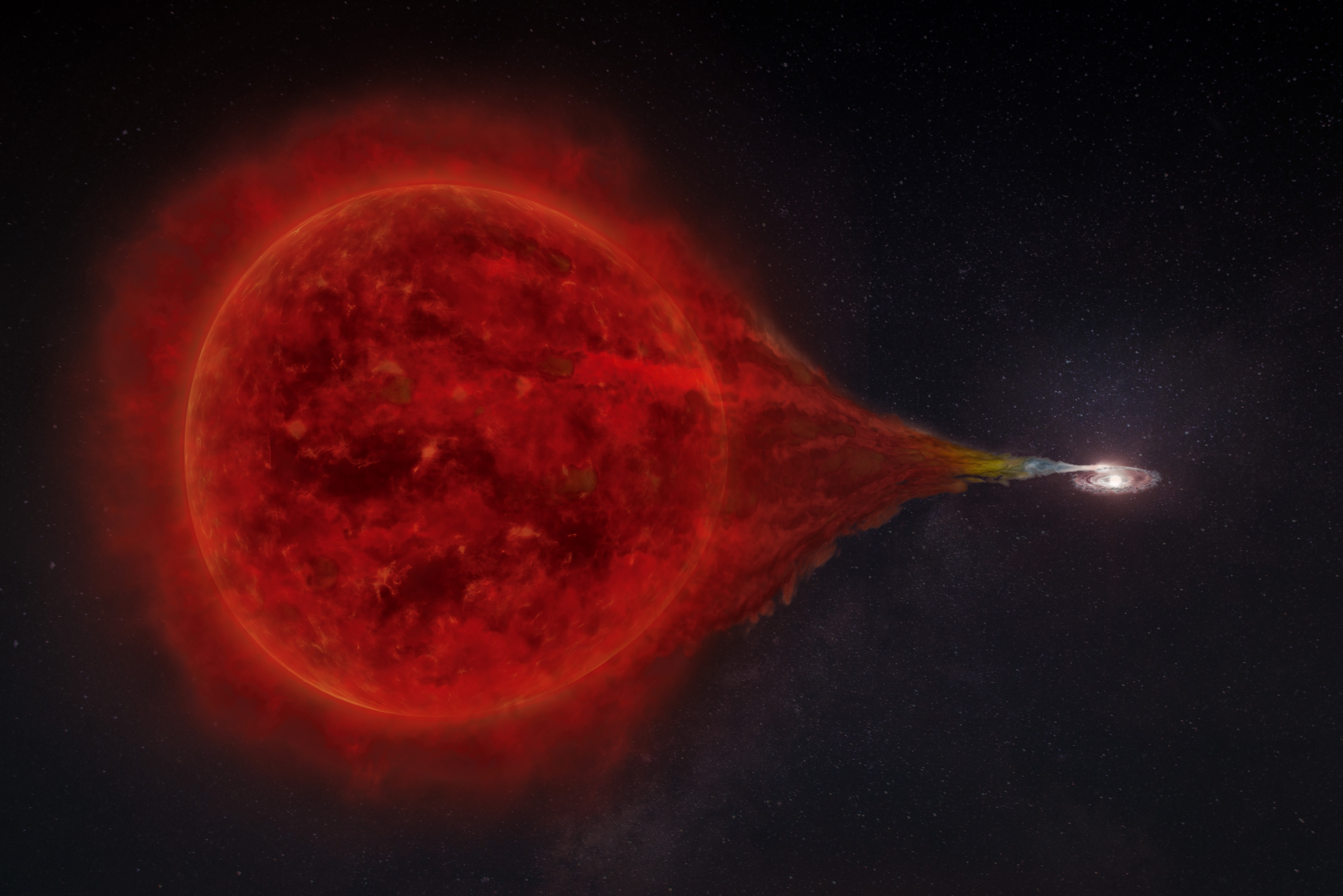
New research has been published about the recurring nova system RS Ophuchi. This is a binary system composed of a red giant and a white dwarf, with the white dwarf constantly siphoning off hydrogen from the larger red giant. About every fifteen years, enough material accumulates on the white dwarf that it ignites in a small thermonuclear explosion called a nova. The last time this happened was in 2001.
Since then a new telescope called MAGIC or Major Atmospheric Gamma Imaging Cherenkov was built, and it was ready for the next nova in 2021. It is located at La Palma in the Canary Islands along with many other telescopes. This telescope specializes in observing extremely high-energy explosions in space, up to 30 teraelectronvolts. It does this by observing what happens when the high-energy cosmic rays from the explosions interact with our atmosphere, producing Cherenkov radiation as they slow down. You may know Cherenkov radiation as the blue glow surrounding spent fuel in nuclear reactor cooling pods.
What is unique about this telescope, or pair of telescopes rather, is its response time. Only 30 seconds after receiving an alert from other systems, the two telescopes were aimed at RS Ophuchi. What they discovered during the 2021 nova was massive – an explosion of 250 gigaelectronvolts. This is 100 billion times more energetic than visible light. It also showed that cosmic rays come from the nuclei of hydrogen atoms excited by the energy from these novae. However, according to David Green, one of the study authors: …they tend to play the role of local heroes – meaning to only contribute to the cosmic rays in the close neighborhood. The big players for cosmic rays are supernova remnants. The shock fronts created from stellar explosions are far more violent compared to novae.
So to get cosmic rays that affect other star systems you need supernovae, the even bigger explosions that are the final stage of a star’s evolution. The MAGIC telescope will continue to look for these.
This work was published in Nature Astronomy.
More Information
MPI press release
“Proton acceleration in thermonuclear nova explosions revealed by gamma rays,” V. A. Acciari et al., 2022 April 14, Nature Astronomy




 Join the Crew!
Join the Crew!
 Escape Velocity Space News
Escape Velocity Space News
0 Comments